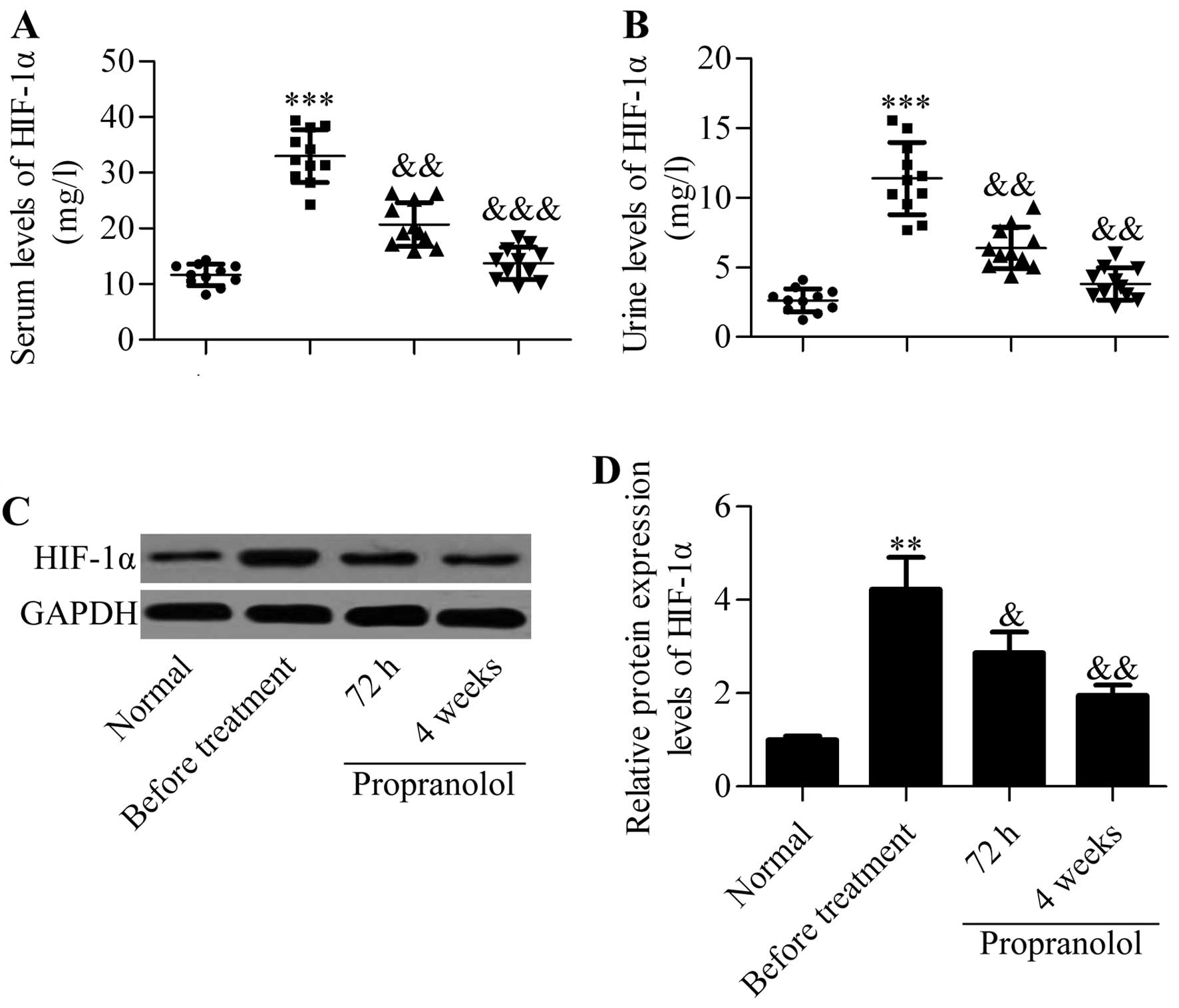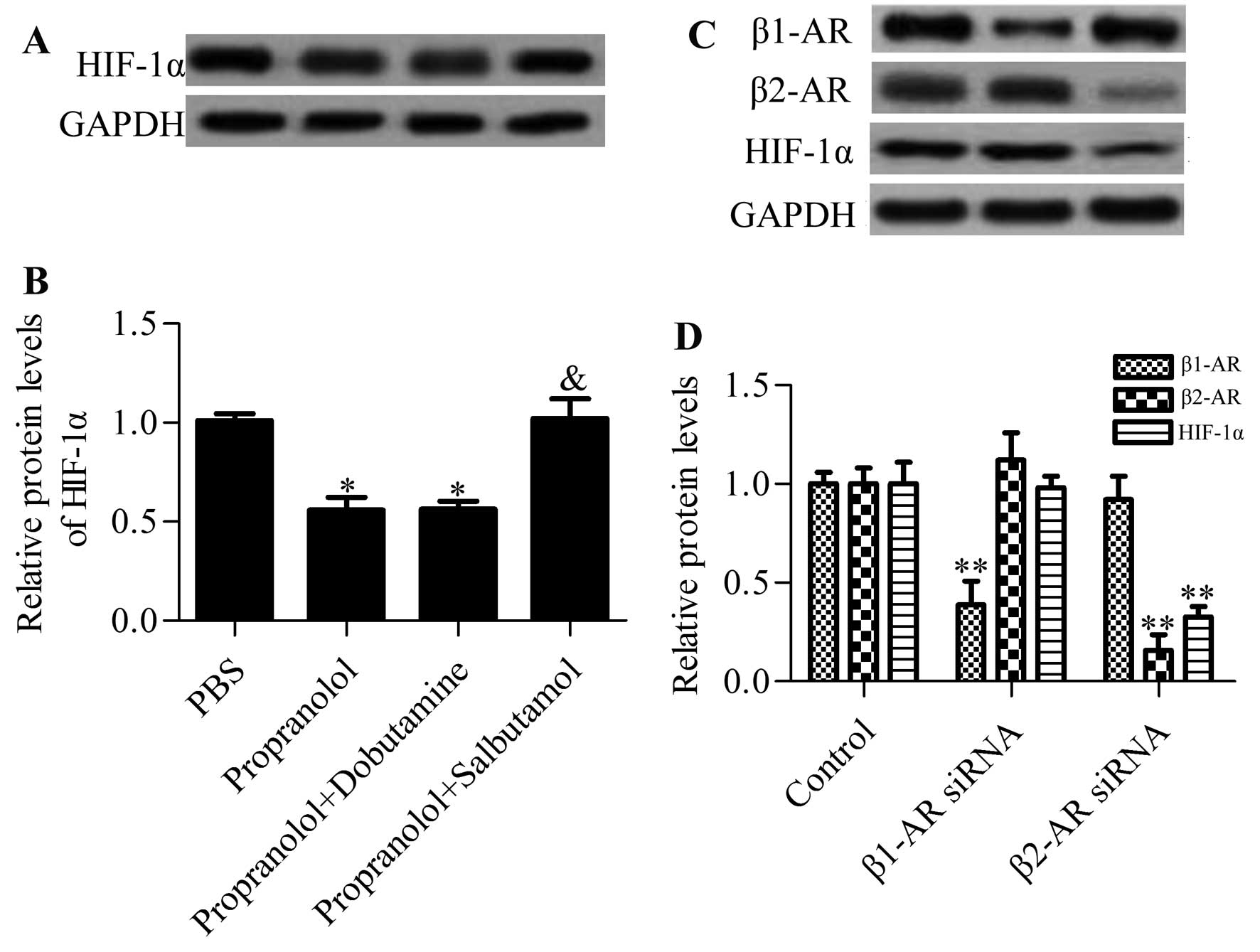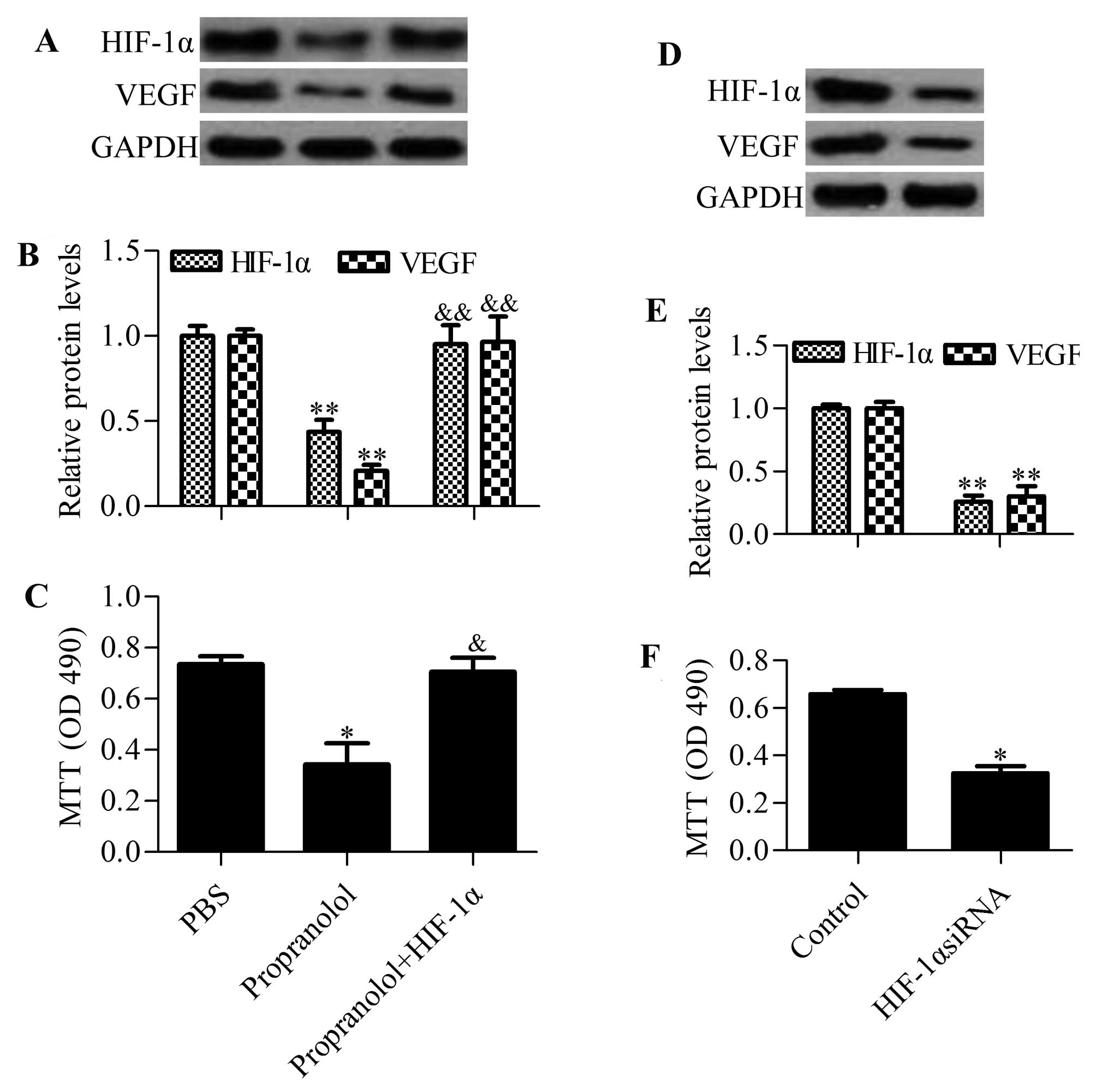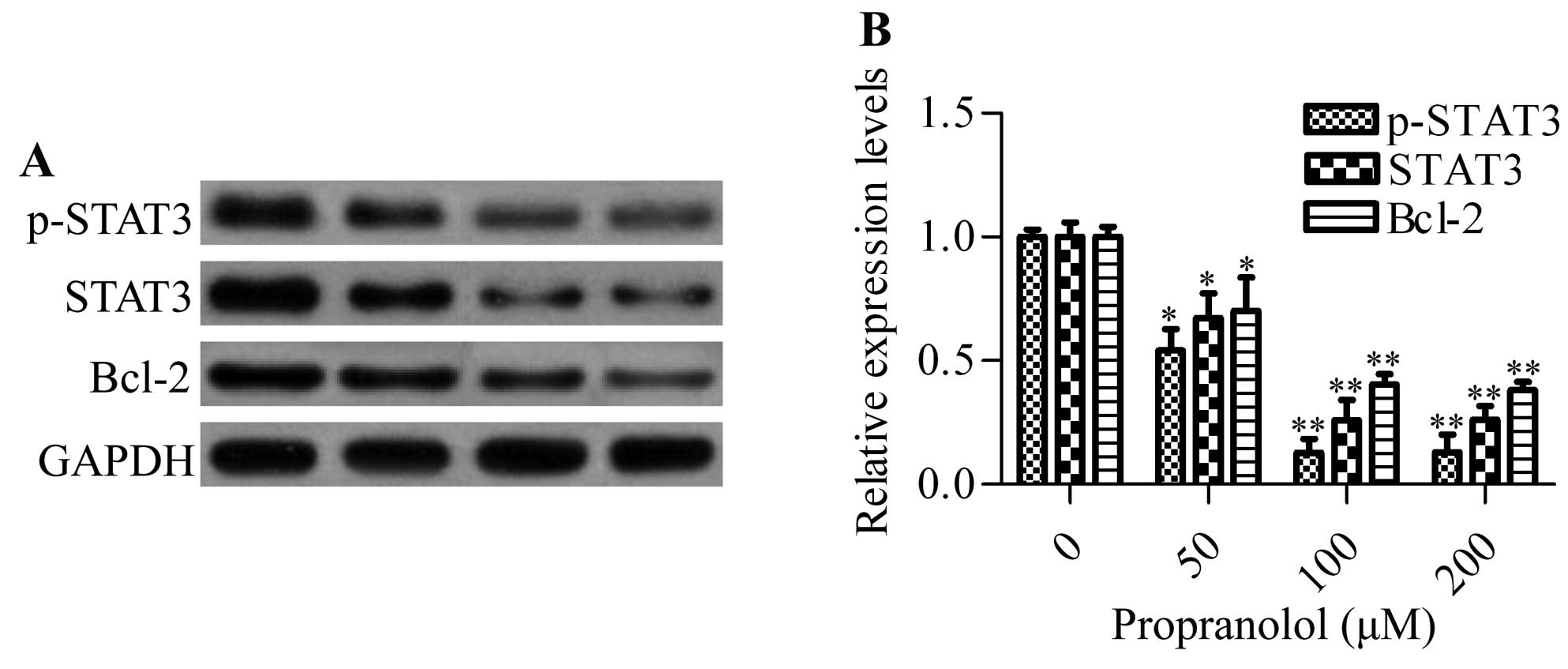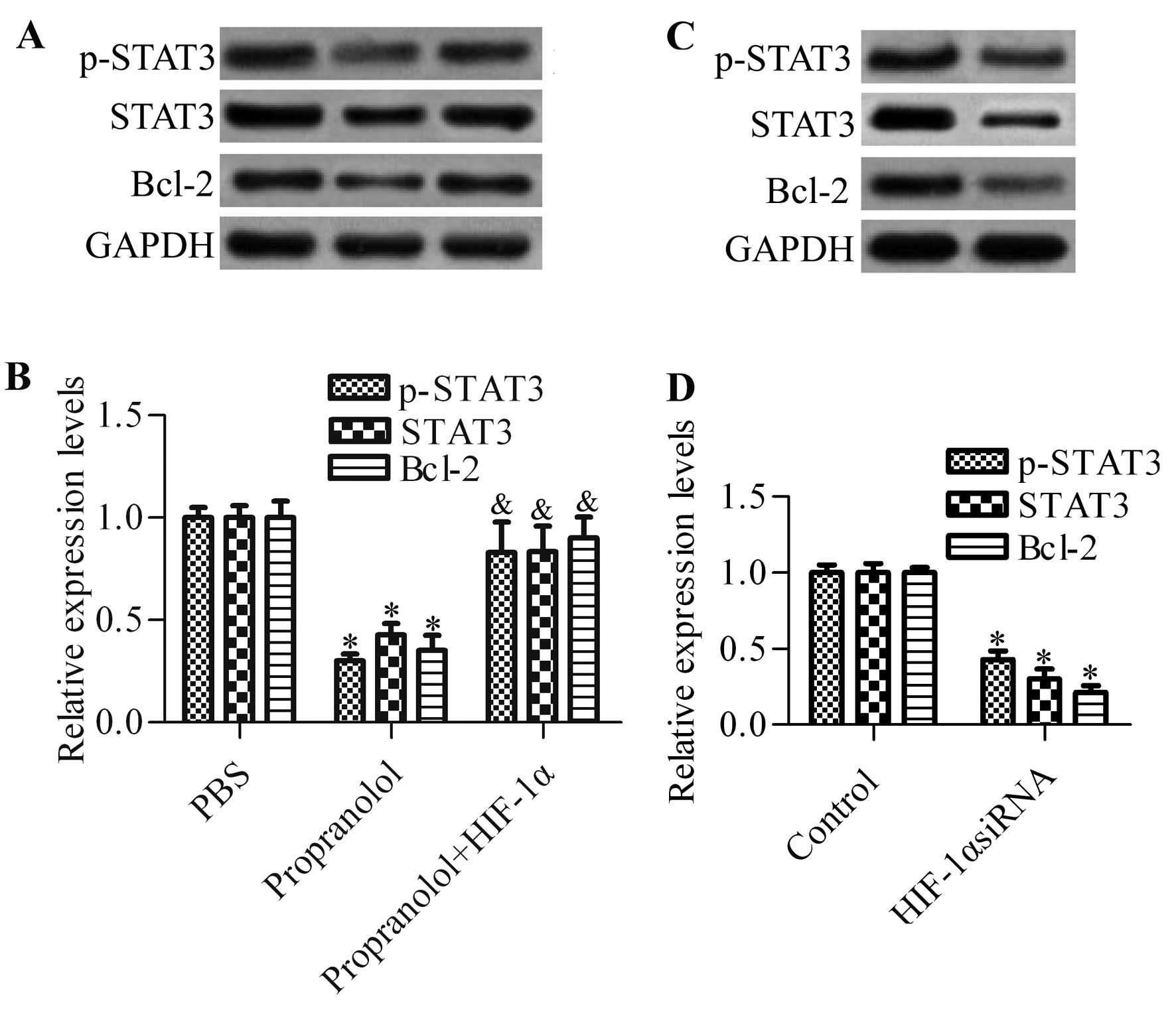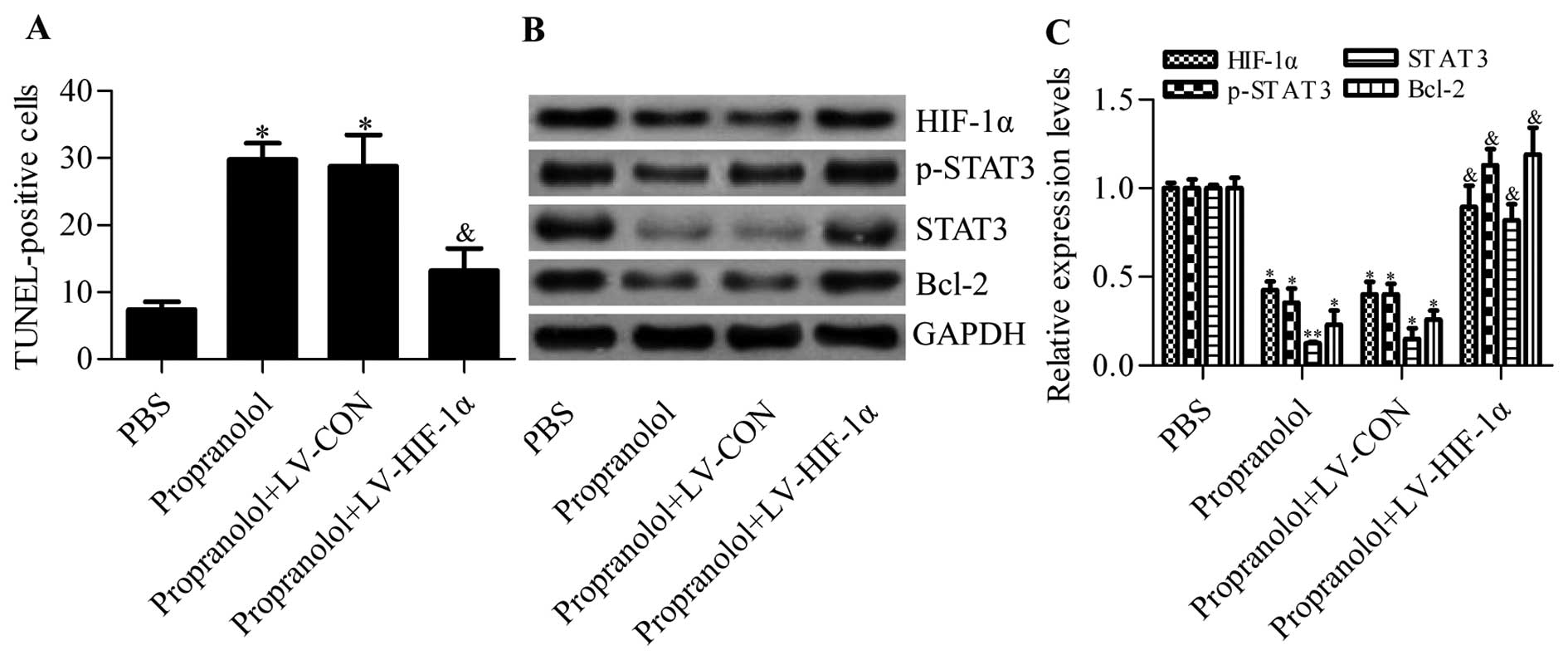Propranolol represses infantile hemangioma cell growth through the β2-adrenergic receptor in a HIF-1α-dependent manner
- Authors:
- Published online on: April 14, 2015 https://doi.org/10.3892/or.2015.3911
- Pages: 3099-3107
Metrics: Total
Views: 0 (Spandidos Publications: | PMC Statistics: )
Total PDF Downloads: 0 (Spandidos Publications: | PMC Statistics: )
Abstract
Propranolol, as a non-selective blocker of the β-adrenergic receptor (AR), is utilised as the first-line treatment for infantile hemangiomas. However, the underlying mechanism remains poorly understood. The present study was designed to investigate the molecular basis of propranolol on the regression of infantile hemangiomas using a proliferating infantile hemangioma-derived endothelial cell line. In infantile hemangioma patients, we found that propranolol significantly decreased the expression levels of the hypoxia inducible factor (HIF)-1α in serum and urine, as well as in hemangioma tissues. In vitro analysis revealed that propranolol reduces the expression of HIF-1α in hemangioma cells in a dose- and time-dependent manner, mainly by acting on β2-AR. Interestingly, it was observed that overexpression of HIF-1α apparently abrogated the inhibitory effects of propranolol on vascular endothelial growth factor (VEGF) expression and cell growth. Our data further demonstrated that propranolol inhibited the signal transducer and activator of transcription 3 (STAT3), a critical oncogenic signaling molecule, and the anti-apoptotic protein Bcl-2. Additionally, overexpression of HIF-1α significantly reversed the inhibitory effects of propranolol on STAT3 signaling. In a mouse xenograft hemangioma model, overexpression of HIF-1α significantly attenuated the therapeutic effects of propranolol and inhibited propranolol-induced hemangioma cell apoptosis. Moreover, the protein levels of VEGF, phosphorylated STAT3, total STAT3 and Bcl-2 were significantly upregulated by HIF-1α overexpression in propranolol-treated nude mice bearing hemangiomas. Collectively, our data provide evidence that propranolol may regress infantile hemangiomas by suppressing VEGF and STAT3 signaling pathways in an HIF-1α-dependent manner.



